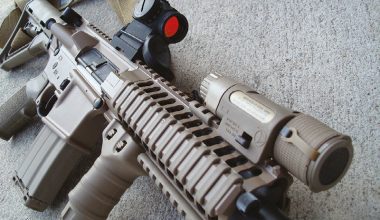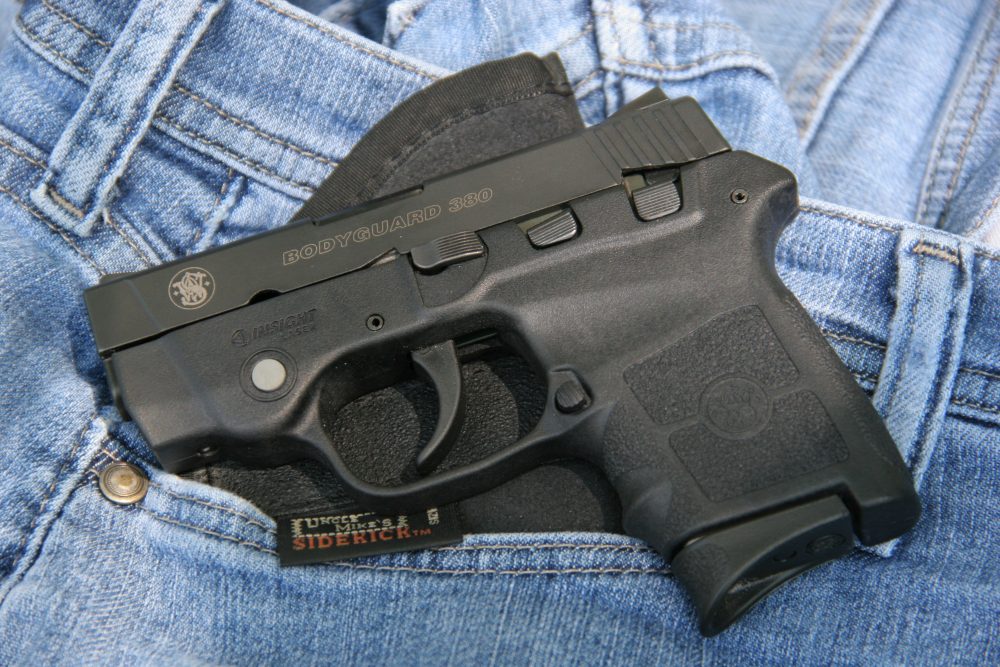You can dress a pig in a sweatsuit, but that doesn’t make him an Olympic athlete.
And you can attend a ten-day defensive firearms course, but that doesn’t make you a gunfighter. It may make you adept in the fields of weapon manipulation and accuracy with a specific firearm. You may even walk out of there with a modicum of strategy and tactics—but it’s not the same as retaliatory defensive shooting when under attack for real.
Defensive shooting, by nature, is retaliatory. If you have the opportunity to smoke somebody’s hindquarters before he can react to your action, you are not responding defensively. You are initiating an action, even though it may be warranted, and this, by definition, is not an immediate defensive response to a deadly force threat.
There’s a reason that the Irish sold you a pig in a poke. By both parties’ agreement, you didn’t know what you’d bought until you forked over the money. The rules of the game entailed that you didn’t get to open the bag until you’d paid for the porker. And, like everything else, not all pigs are the same—and every gunfight is different, with no rules. You want “rules of engagement”? Talk to your fiancée.
So if you train under one school of thought, you’d better hope that your enemy does what your sensei said he would, or you’ll end up being neither the buyer nor the seller, but more likely the bacon in the bag. And that, in a nutshell, is the problem with different training schools.
First and foremost, let it be clearly stated that this author firmly believes that one should attend every school which one’s time and finances allow. Knowledge is power. But having said this, it would be as well to realize that the hierarchy in every training academy firmly believes in their system from a subjective viewpoint. The trainee retrospectively looks at the training objectively. This leads to the inevitable quotation, “Those who can do, do. Those who can’t, teach.”
And it would also be as well to remember the words of the late, great shotgunner Elmer Fudd: “Be vewy, vewy careful.” Because good as Fudd was with that old double, the dwatted wabbit never seemed to take buckshot hits. And I personally don’t want a pedagogue who can’t control his own cawwot patch, when I’m trusting his training to ready me for war. Yes indeedy, Mister Fudd, Sir, I’ll certainly pay attention in your school, but I’m going to be vewy, vewy careful in choosing what information I swallow and what I expectorate.
Because while you’re chasing a talking rabbit for stealing your lousy carrots, I’m in a real gunfight, with real blood and real bullets—and I can’t afford to lose Round One. This isn’t a ten-round boxing match with Marquis of Queensberry rules. Lose Round One and there is no Round Two.
So I’m watching this video, the contents of which are intended to relay to us lesser mortals how to instantaneously react to an armed carjacker. The technique entails running both thumbs along the seatbelt to aid in locating the belt release latch, releasing said mechanism, acquiring a firing grip on a conveniently located pistol “tracking” the steering wheel to avoid sweeping one’s nether regions with the gun muzzle, and then accurately firing rounds at your assailant through the open driver’s-side window.
Now I’m no longer a teenager, so I don’t know everything anymore, but my beFuddled mind tells me you’re probably dead long before you could finish reading the previous sentence which, granted, was probably the longest sentence in literary history. And this much I know for sure, Elmer: either you’ve never been carjacked for real, or else you’re wittingly or unwittingly committing sophism of the worst kind—or both.
On what do I base this opinion? The fact that for 34 years I lived in a country where the national pastime was carjacking, that’s what. Hence the Parliamentary/Congressionally approved foot-pedal-operated device that incinerates carjackers by means of a laterally emitted ball of white flame. And yes, the designer/manufacturer’s proudest claim is that the fireball doesn’t destroy the paintwork on the intended victim’s car.
If you’re deploying a pistol against a would-be carjacker, here’s how it works in actuality:
First, you’ll be reacting off a visual impetus, not an audible (as used on a training range). So you’ll be slower.
Second, you aren’t going to get the seatbelt unlatched in a hurry, no matter how much you practice. Or are you the only person on the planet who’s never embarrassed himself after finally reaching a restroom with an exploding bladder—and then missed the jeans zipper release on four frantic successive attempts?
Third, you will sweep yourself with the gun muzzle in a panic-stricken attempt to make up for lost time. No careful steering wheel “tracking” now.
And one more for luck…. How did your side window magically lower itself—or I guess you haven’t actually fired rounds through a driver’s-side window while seated behind the wheel. Try it sometime. It’s a blast—literally and figuratively.
While safety is mandatory on a training range, as a trainee you must take a long objective look at the difference between safe range training and what actually transpires in battle—or you’ll possibly walk away from the training exercise with a misguided sense of security.
Yes, you can dress a pig in a sweatsuit, and you may be able to train him to run fast. And you may even strike a bargain buying a pig in a poke. But when all is said and done, a pig is only bacon that hasn’t stopped breathing yet.
[Louis Awerbuck is Director of the internationally acclaimed Yavapai Firearms Academy. Course information and schedules are available at their website at www.yfainc.com]





